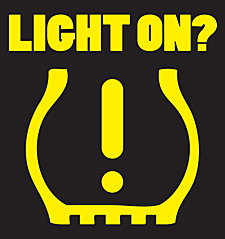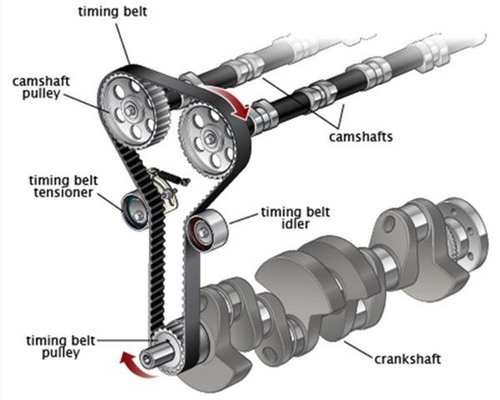Posted on 5/5/2023

Ah, the trusty oxygen sensor. This little guy may be small, but it sure packs a punch when it comes to improving your car's performance and fuel economy. You see, the oxygen sensor is like the Sherlock Holmes of your car's exhaust system, constantly measuring the amount of oxygen present and sending signals to the engine control unit to adjust the air-to-fuel mixture accordingly. It's like having a personal assistant for your car's engine! Now, you may be wondering where this magical little sensor is located. Well, it's nestled snugly in the exhaust pipe, between the catalytic converter and the engine. It may be small, but it's mighty, helping to reduce emissions, increase fuel economy, and improve overall engine performance. Talk about a triple threat! There are two types of oxygen sensors: zirconium and titanium. Zirconium sensors are like the OGs of the oxygen sensor world, commonly found in older cars. They measure oxygen by passing it through a porous ceram ... read more
Posted on 4/27/2023

Don’t let a faulty pair of wipers put you in a dangerous situation! If you’re like most people you probably don’t spend much time thinking about how often you rely on your windshield wipers. Windshield wipers are like an cell phone charger, out of sight and out of mind until they are needed. But when you do turn on your wipers, just like your phone and phone charger, you expect them to work properly. Your windshield wipers play a significant role in keeping you safe, especially during rain or snow storms. It is crucial that you know when windshield wipers not working right. If you notice that your vehicle's wiper blades are not clearing away rain, snow, and sleet well then it might be time to inspect the wipers. WINDSHIELD WIPER FUN FACTS IN HISTORY: One of the earliest recorded patents for the windshield wiper is by George J. Capewell of Hartford Connecticut, which was filed on August 6, 1896. His invention was for an auto ... read more
Posted on 4/26/2023

WHAT DOES TPMS STAND FOR? A tire-pressure monitoring system (TPMS) monitors the air pressure inside the pneumatic tires on vehicles. A TPMS reports real-time tire-pressure information to the driver, using either a gauge, a pictogram display, or a simple low-pressure warning light. TPMS can be divided into two different types – direct (dTPMS) and indirect (iTPMS). Indirect TPMS: Indirect TPMS measure air pressure with software-based systems rather than physical sensors. While the software may leverage existing vehicle sensors—like wheel speed sensors or accelerometers—indirect TPMS monitors air pressure via the antilock braking system (ABS). The ABS provides tire pressure information by measuring the difference in the diameter of each tire. Direct TPMS: Direct TPMS measures tire pressure using waterproof hardware sensors located in each tire (or on the valve stem). Each wheel includes a battery-driven pressure sensor which transfers pressure informa ... read more
Posted on 4/25/2023

WHAT IS A STARTER? Your battery powers the starter, and the purpose of the starter is to engage the engine and get the vehicle going. The starter comprises two parts: the primary motor and solenoid. The primary motor turns the crankshaft and starts the engine, and the solenoid (or relay) engages the starter's drive gear and closes the main motor's electrical connections. If either one of the two parts stops working at any given time, you cannot move your car without a jumpstart or tow. A starting problem can be caused by poor maintenance or normal wear and tear. As you can guess, a starter gets a lot of wear during its lifetime, so issues are common when a vehicle gets old. WHAT CAUSES STARTER PROBLEMS A variety of problems can lead to a bad starter, including: Loose wiring to and from the starter Dirty or corroded connections at the starter Battery corrosion Damaged or worn-out parts in the starter system Oil leaks Bad relay or fuse ... read more
Posted on 4/18/2023

What Do I need to Know about Timing Belts? Most internal combustion engines utilize a similar design, with a crankshaft at the bottom, and a camshaft above it. Both of these shafts spin, with the crankshaft being connected to the pistons; rotating as the pistons move up and down. The camshaft uses a series of lobes to open and close the valves, which let air in and out of your engine. Since it’s crucial that the valves open and close at the correct time, the crankshaft and camshaft are connected by a timing belt, or timing chain. If this valve timing is not correct, the engine will perform poorly – or worse, may damage itself. Engines come in two configurations: Interference and non-interference. When a timing belt fails the camshaft(s) stops turning and the valves stop moving, but the crankshaft still rotates for a few seconds. An interference engine has insufficient clearance between the valves and pistons. Because the crankshaft keeps rotating ... read more